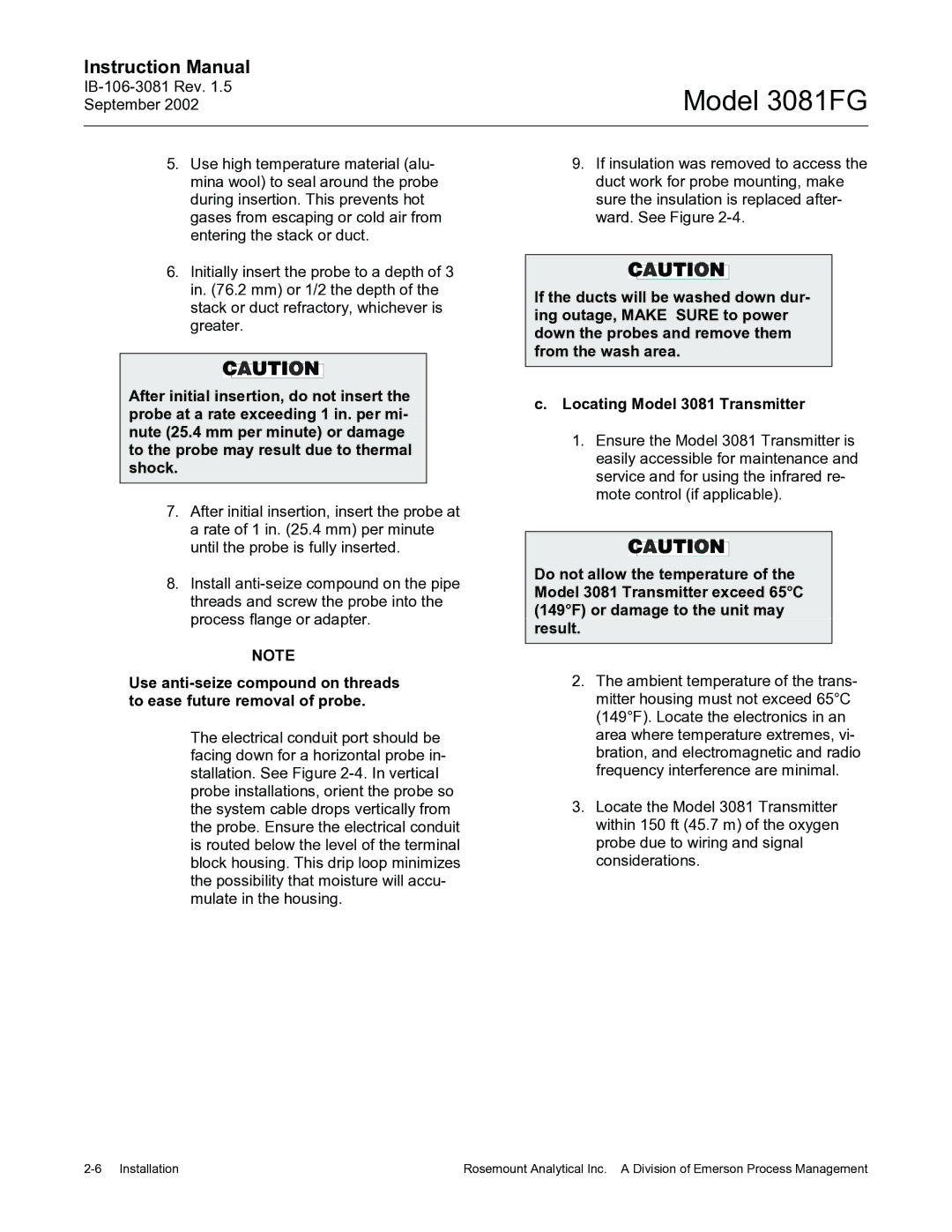
Instruction Manual
Model 3081FG
5.Use high temperature material (alu- mina wool) to seal around the probe during insertion. This prevents hot gases from escaping or cold air from entering the stack or duct.
6.Initially insert the probe to a depth of 3 in. (76.2 mm) or 1/2 the depth of the stack or duct refractory, whichever is greater.
After initial insertion, do not insert the probe at a rate exceeding 1 in. per mi- nute (25.4 mm per minute) or damage to the probe may result due to thermal shock.
7.After initial insertion, insert the probe at a rate of 1 in. (25.4 mm) per minute until the probe is fully inserted.
8.Install
9.If insulation was removed to access the duct work for probe mounting, make sure the insulation is replaced after- ward. See Figure
If the ducts will be washed down dur- ing outage, MAKE SURE to power down the probes and remove them from the wash area.
c.Locating Model 3081 Transmitter
1.Ensure the Model 3081 Transmitter is easily accessible for maintenance and service and for using the infrared re- mote control (if applicable).
Do not allow the temperature of the Model 3081 Transmitter exceed 65°C (149°F) or damage to the unit may result.
NOTE
Use
The electrical conduit port should be facing down for a horizontal probe in- stallation. See Figure
2.The ambient temperature of the trans- mitter housing must not exceed 65°C (149°F). Locate the electronics in an area where temperature extremes, vi- bration, and electromagnetic and radio frequency interference are minimal.
3.Locate the Model 3081 Transmitter within 150 ft (45.7 m) of the oxygen probe due to wiring and signal considerations.
Rosemount Analytical Inc. A Division of Emerson Process Management |
